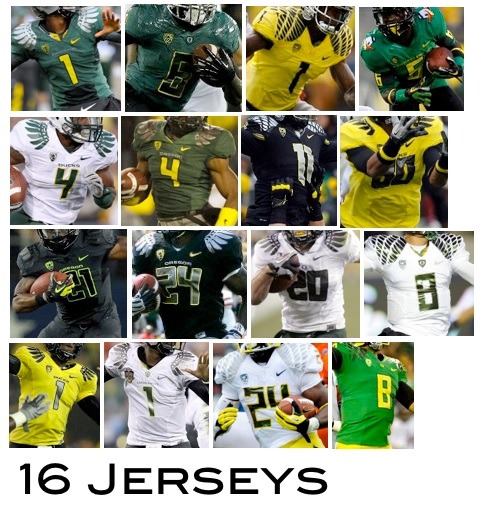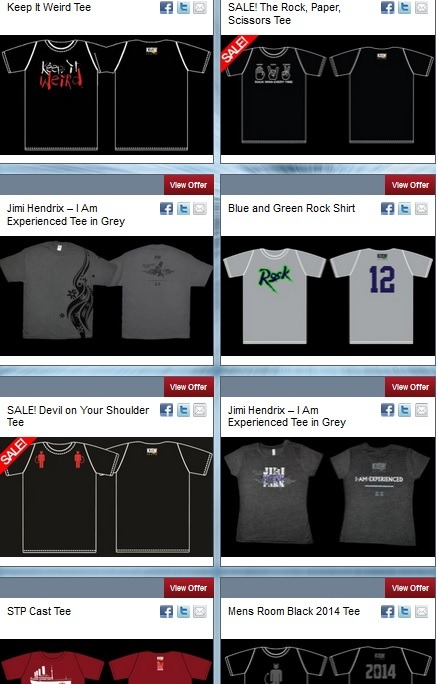As the Apple Watch promotional juggernaut has rolled out during the past week, analysts continue to parse the comments of CEO Tim Cook, along with offering their interpretations of what Apple is trying to do with its first wearable product.
In fact, some say the number of different designs, sizes, materials, and bands is very “un-Apple-like,” breaking the Jobsian notion that there should be one design that is universally acceptable for all of us.
Yet, that’s the polar opposite of Apple Watch’s marketing plan. According to Wareable, there are 38 different models to choose from (with even more choices rumored to be on the way). In fact, these options were satirized by those crazy nerds at Joy of Tech last week:
So why is Apple apparently breaking policy by developing these extensive lines of smartwatches right at the introduction point? Because Watch is unlike any product Apple has ever launched.
It’s a wearable, and by definition, that means it’s more than a gadget – it’s fashion. It is meant to be seen. And when it comes to watches (think jewelry), most of us have very particular tastes and ideas about what we want to wear on our wrists. It’s personal, and Apple is telling us we can wear the Apple Watch that was made just for us.
This isn’t a laptop we throw in a briefcase, a tablet we keep in our backpack, or a smartphone that spends most of its time in a pocket or a purse. The Apple Watch is meant to be seen – it’s a fashion statement that is a reflection of who we are, the technology and brands we believe in, and the way we want to look in the office, at weekend parties, or at the gym.
At CES last January, we talked to many different smartwatch makers. And we asked them all the same question: Can this product become mass market, like smartphones, laptops, and tablets have become?
And while many of the marketing and design people immediately started predicting that just about everyone would be sporting a smartwatch within the next five years, most rational observers have been more than a little skeptical. And with good reason. Smartwatches of one kind or another have been available for some time now, but only a very small percentage of people have purchased them, despite clever TV marketing from Samsung, in particular.
Apple is out to change that, and the fashion and design of their Watch is going to be a major determinant of whether they’re successful.
When you think about it, the entire wearables industry has thrived in recent years because of expanded choice, variety, and personalization. Sports teams have come to this realization, and in recent years the simple home and away jerseys have blossomed into an entire line of variants and versions, amping up sales and growing interest in franchises and sports.
From camo to throwbacks to practice jerseys, there are now multiple ways teams can be outfitted on the field and market these different versions to their big fans. The Oregon Ducks football program, along with Nike, started what has become a mega-trend in expanding their uniforms.
Wired did the math, and between jerseys, helmets, shoes, socks, and knickers, there are 9,984 unique uniform combinations. It’s a lot like a “fashion long tail,” and it’s effective because consumers want to be connected with favorite brands, but in a very individual and personalized way.
And in their quest to keep attendance and interest up among their target audience – Millennials – along with recruiting high school athletes from the same generation – this emphasis on style and fashion is brilliant.
Radio could be participating in this rush to fashion, style, and personalization, but most stations stopped making T-shirts, hats, and wearables a long time ago during an earlier round of budget cuts. That’s too bad because the best and most iconic stations could be launching their own startups – online merch stores as well as in-market pop-up stores designed to move hot logoware products.
This is what Entercom’s KISW/Seattle has been doing for years, and with great success. From shirts for their key personality shows to wearables that while not as varied as the Oregon Ducks’ wardrobes, do a great job of capturing the buzz and zeitgeist of the moment.
These wearables can be purchased online, and allow their top-rated audience to play along with their favorite DJs on the radio.
At the same time, many of the wearables are Seattle-themed, and have become another way for Dave Richards’ mega-brand to reflect an amazing community that brims with pride, attitude, and weirdness.
And just like many fashion trends, some of the most outrageous efforts turn out to be especially popular, and of course, profitable.
The newest entry is the KISW Safety Shirt.
Don’t know what a safety shirt is? Neither did I. They’re the stand-out yellow/orange shirts that construction and road workers wear that help ensure that passing cars, big machines, and other deadly weapons don’t accidentally bump into a person.
And that’s just the kind of shirt that looks great with that ubiquitous “KISW Rocks” logo. To introduce this next high-fashion item in their prize closet, KISW produced this video:
>Email recipients: Click here to watch KISW video<
Our world is changing, and radio would do well to think about these style points that can translate to audience expansion and revenue generation. Great stations have the ability to cash in on their iconic status but it requires vision, investment, and understanding how design, customization, and variety are of importance to so many consumers.
Like so many brands, it’s about making a fashion statement.
- What To Do If Your Radio Station Goes Through A Midlife Crisis - April 25, 2025
- A 2020 Lesson?It Could All Be Gone In A Flash - April 24, 2025
- How AI Can Give Radio Personalities More…PERSONALITY - April 23, 2025







Anyone who blows off this is living in a vacuum. The watch is going to be huge. This product, along with Apple’s new CarPlay software, which will allow users to replicate their phone, iPad and laptop in their car dashboard, will make Apple a Trillion dollar company in time.
Does anyone NEED one? Of course not. But this is Apple doing what they do best: re-inventing a device and making it the industry standard. Just like when they took the MP3 player and invented the iPod, the computer tablet became the iPad…they turned the flip cell phone into the iPhone. Radio can learn from this strategy. It’s simply taking good cume and building solid TSL. Getting your regular fans to spend more time with your product(s) by constantly improving and re-inventing things that everyone else is doing in an average way.
Jim, you see it the way I see it. They are especially fearless about disrupting their own products in order to advance the game. It is something that one could only wish radio had done with streaming, podcasting, and other technologies. It is amazing to watch this playing out right before our very eyes. Thanks for the observations.